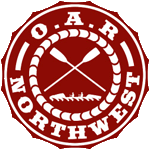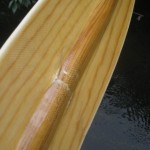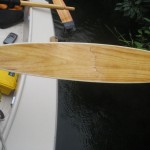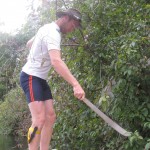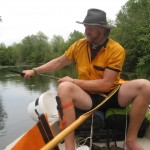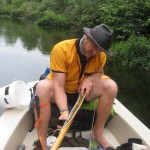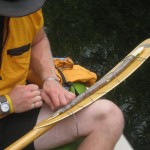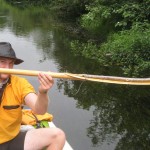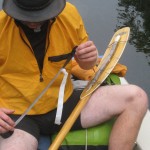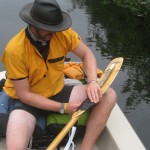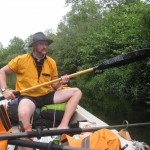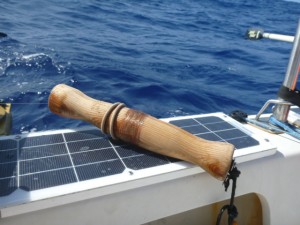
…now fishing pole.
This blog’s been in the hopper for a while, but if you are just joining us, the long and the short is that we are rowing Dakar to Miami and have about a 1/3 left to go (~1,300 nautical miles). Earlier in the trip we broke two of our six oars, and our power went out for a few hours… Ergo, this blog is dedicated to what happens if more bad luck happens.
Oars: If we break one oar we will try and fix it! If we break two oars we will also try and fix them. We have tools, and at this point several spare bits of oar and rope, and will do our best to make something work with a combination of knots and bracing. I have done it before and have faith I could do it again.
In 2008, Greg and I circumnavigated Washington’s Olympic Peninsula by rowboat, and had to fix an oar blade then. Here’s how we did it:
If we get down to two oars left, one person will row at a time. Each person will row half as much… but they will row harder.
If we are down to one and we cannot salvage any more oars, we will take the last oar and the bits of other oars, and along with our rope, some sleeping sheets and sleeping bags will turn this rowboat into a sailboat. In my tool kit I brought a special bag full of random, strong, useful stuff. It’s all for moments like this. After evaluating how well she sails, we will make the decision to either head to the closest land, or all the way to Miami.

Power: If this goes out again for good, we will bust out the handheld watermaker, and using our spare batteries and handheld GPS, will head to the closest land. If we lose the GPS, we still have charts, a compass, and can compute longitude with relative ease, based on time of sunset.
Now if any of these extremes happen, it would affect our rowing record to be the first crew to ever row mainland Africa to mainland North America. Consensus on board the boat is that at that point, nothing like that matters.
Hopefully nothing like this will happen, but if it does, this or something similar is the plan.
